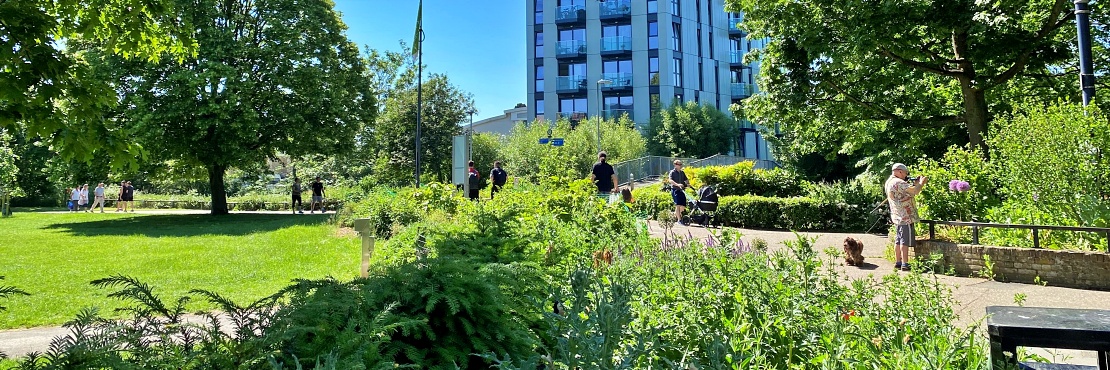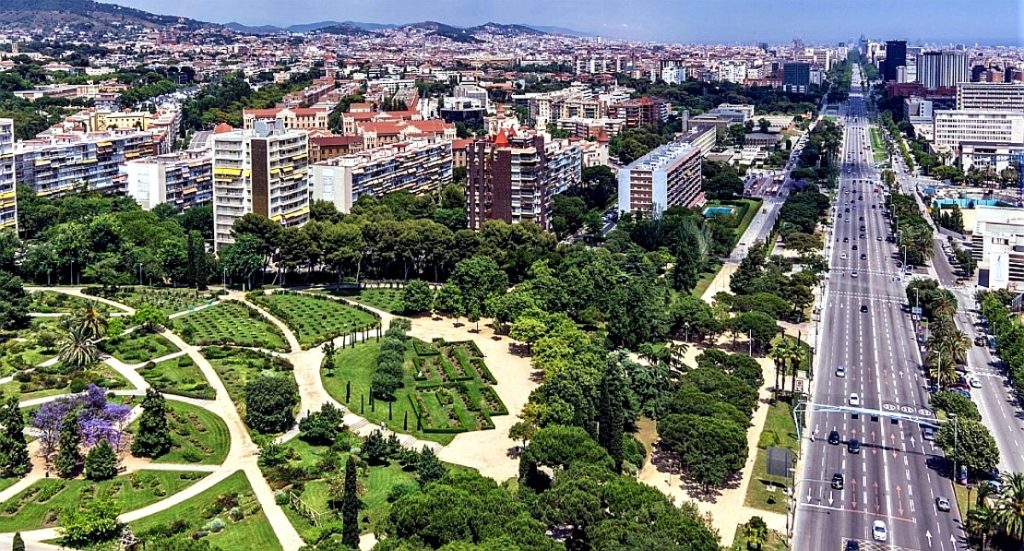Staff of Natural England Press writes:
A major new tool to help towns and cities turn greener has been launched today by Natural England. Aimed at planners and developers, the Green Infrastructure Framework will help increase the amount of green cover to 40% in urban residential areas.
Parks and greenspaces in England deliver an estimated £6.6 billion of health, climate change and environmental benefits every year. But with 80% of people now living in towns and cities, one third of people do not have access to good quality green and blue space within 15 minutes of their home. The government’s Environmental Improvement Plan, published yesterday, includes a commitment that the public should be able to access green space or water, such as woodlands, wetlands, parks and rivers, within a 15-minute walk from their home.
Using green infrastructure to bring the sights, sounds and smells of nature into every city, town and street will not only create nature abundant, beautiful spaces for everyone to enjoy but will help tackle climate change too.
Marian Spain, Chief Executive of Natural England
The Green Infrastructure Framework (GIF) provides a structure to analyse where greenspace in urban environments is needed most. It aims to support equitable access to greenspace across the country, with an overarching target for everyone being able to reach good quality greenspace in their local area.
From parks to green roofs, and increased tree cover, the Green Infrastructure Framework will make a significant contribution to nature recovery by embedding nature into new developments. Increasing the extent and connectivity of nature-rich habitats will also help increase wildlife populations, build resilience to the impacts of climate change, and ensure our cities are habitable for the future.
As a key resource for developers and local planning authorities, the framework integrates green infrastructure tools, principles, standards and design guidance:
- Urban Greening Factor (UGF) for England – This planning tool improves the provision of green infrastructure and increases the level of greening in urban environments. The standard is set at 0.4 for residential development, which means there is a target in place for approximately 40% of residential developments to have green and blue spaces, green roofs or green walls. When adopted by a local planning authority it provides clarity about the quantity and quality of green infrastructure required to secure planning approval in a major new development. The Greater London Authority is already applying this principle.
The Green Infrastructure Standards are being applied in Allestree Park in Derby, a former golf course, which is now set to become one of the UK’s largest urban rewilding projects. Over time it will become a nature-rich greenspace full of wet landscapes, grasslands and trees which can be used by community groups and families for leisure, exercise and socialising. Derbyshire Wildlife Trust, the University of Derby and Rewilding Britain are working to transform this landscape into a haven for wildlife and people and are showing how meeting Natural England’s standards can increase access to good quality greenspace for local communities.
Read more: Natural England unveils new Green Infrastructure Framework
 Greenroofs.comConnecting the Planet + Living Architecture
Greenroofs.comConnecting the Planet + Living Architecture









